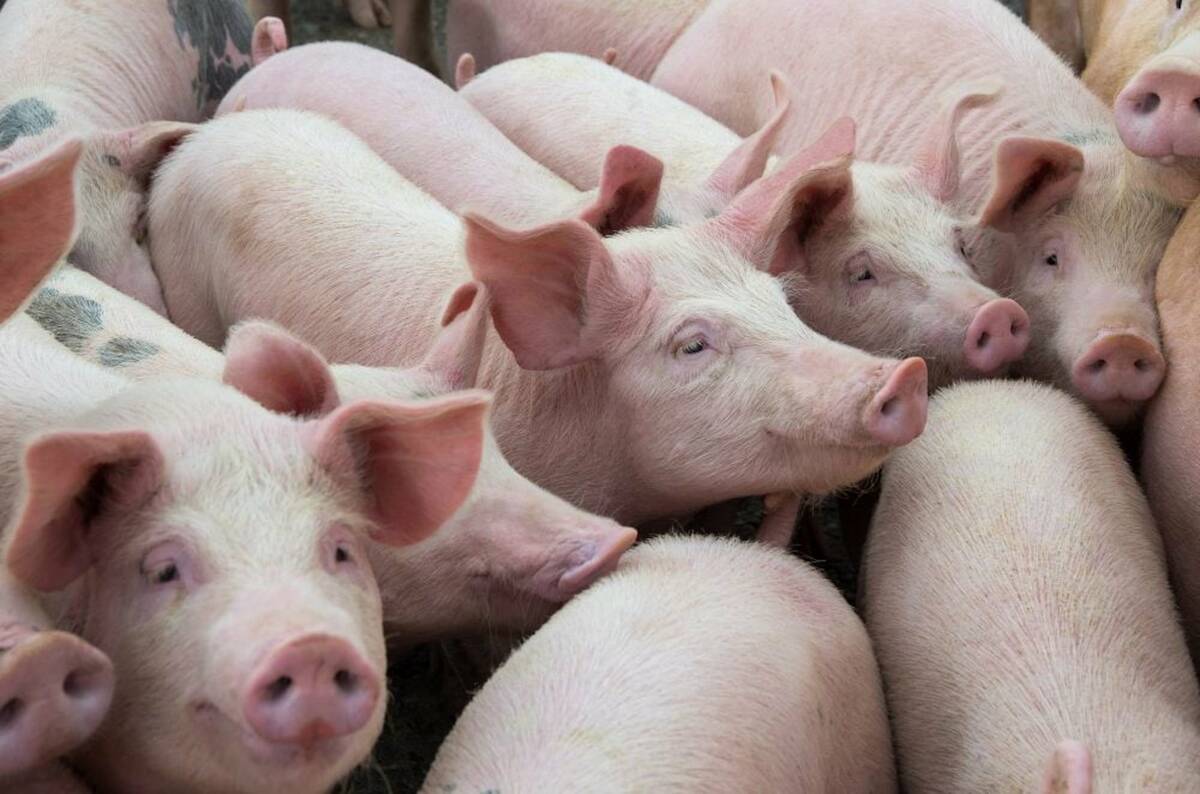Relationship between people, animals | Art project designed to spark awareness about raising animals for consumption
The heifer stands in the chute. The man faces it, holding a gun. They begin a slow motion, six-minute ballet that ends in a gunshot.
That is the essence of Mary Kavanagh’s installation within the Ecotone exhibit at the Southern Alberta Art Gallery in Lethbridge.
Kavanagh, a University of Leth-bridge professor, is one of several artists whose work makes up the exhibit, which will be open until April 14.
Her video, Facing Io, was recorded at a family-owned abattoir in Coaldale, Alta., and is among the most thought provoking in the exhibit.
Read Also

Pork council rejoins national farm organization
Canadian Pork Council decides to rejoin Canadian Federation of Agriculture to present a united trade front
Io is the lovely maiden of Greek mythology who was turned into a heifer by her lover, Zeus, to hide his attraction from his wife, Hera.
“I wanted to elevate it into a level of the mythological, and that’s why the title,” said Kavanagh.
But the theme of this installation is the very real process involved in getting beef onto the dinner plate.
“Part of my work involves being a witness to the things that we don’t normally care to see. What is kept out of our realm as urban dwellers that we benefit from but don’t have to know about?”
Ecotone is the third stage of a project initiated by the Field Notes Collective, a group of scientists and artists intent on exploring the complex relationships between people and their environment.
Kavanagh was one of 12 artists who spent time on southern Alberta ranches as part of the project.
She was at Chimney Rock Ranch, operated by Deb and Tony Webster, and said she came to admire the relationship between ranchers and their animals.
“But I kept thinking, ‘what is this all about? What is this agricultural work really about?’ It’s about raising and producing animals for human consumption.”
She decided to explore the other end of the process and was eventually invited to observe the slaughter process of six animals at Prairie Meats, an experience completely new to her.
After pondering the resulting photographs and video for several months, she decided how to present it through Ecotone. The result is a repeating video showing a captive but restive heifer in the moments before death.
“Essentially the question emerged, which was, how do we reconcile this confrontation between the man and the animal? How do we rationalize killing an animal to stay alive?”
Kavanagh said her work does not seek to make a judgment about cattle production. Everyone in the beef chain is complicit in the slaughter of cattle, she said. It is a modern reality of food production and consumption.
Her goal is to make people think about that fact.
She said reaction has been plentiful, and among the most meaningful was a comment from a rancher.
“He called the work honest and gutsy, and that it got to the core of an issue. I liked that comment, coming from him especially.”
Ryan Doherty, curator at the Southern Alberta Art Gallery, said the Ecotone exhibit has been well attended. Kavanagh’s video has generated much comment, but it is by no means the only installation that has resonated with the public.
“There’s all these different perspectives, and I think everyone who has come in has found really something they can grab hold of.”
Among the exhibits is an installation of earth and prairie plants, a display of rough fescue complete with roots, numerous depictions of invasive plant species and a sculpture of typical prairie terrain using real flora.
“We’re all really implicated in shaping our landscape and our environment around us, but we often don’t realize it,” said Doherty.
“It has its impact, for good or for bad. It’s something we need to start being aware of.”

















